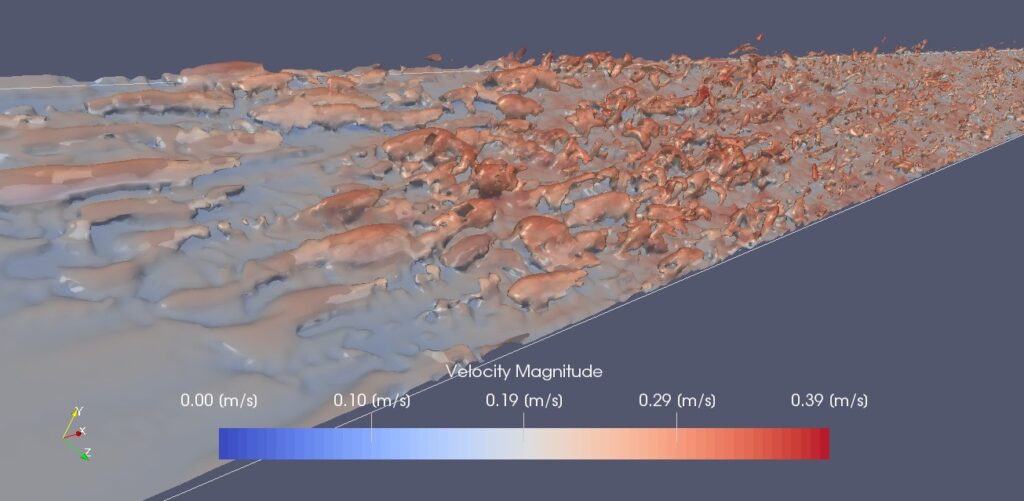The numerical simulation of environmental fluid flows is a difficult task. Despite monumental increases in the speed of modern computers, the complex nature of these flows can place the simulation of many problems well outside the capabilities of even the most powerful desktop computer.
Enter the supercomputer, a device purpose-built to process data at this scale. While highly useful in the area of fluid flow simulation, due to their high cost, operational complexities, and infrastructure requirements, most academic supercomputers are communal resources shared among many practitioners specialized in the use of high performance computing.

Visualization of the near-bed velocity structure during the transition from a laminar to to turbulent boundary layer.
This project changes that dynamic by bringing the supercomputer into an individual lab setting and into the hands of single users. Researchers working in the Baker Lab now have direct and exclusive access to a cluster capable of reducing nearly two years of computations into a single day (see Computational Resources for details). This was made possible through a combination of careful planning and innovative assembly which reduced the cost of the cluster to a fraction of that of a comparable system.
 The cluster is typically used to run OpenFOAM, ADCIRC, and large parallel MATLAB jobs. However, practitioners may compile their own software using freely available suites open source numerical codes. – Brandon Dillon, Ph.D. Student
The cluster is typically used to run OpenFOAM, ADCIRC, and large parallel MATLAB jobs. However, practitioners may compile their own software using freely available suites open source numerical codes. – Brandon Dillon, Ph.D. Student
